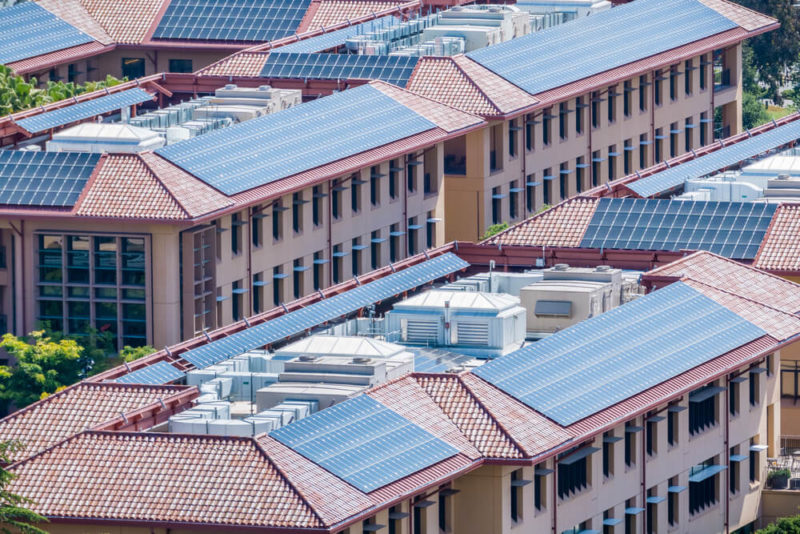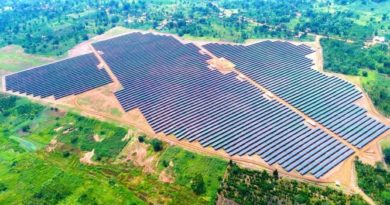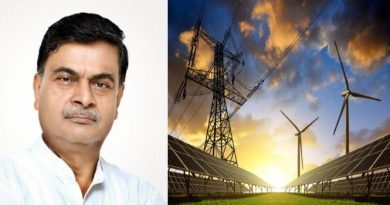No Rooftop Solar? R.K. Singh’s Numbers Story At BRICS Meet Has another Story
India, which had a stated aim of 175 GW of renewables by 2022, has just increased its target to 200 GW, according the Minister for Power and Renewable Energy., Mr R.K. Singh. However, the fine print reveals serious cause for worry, for the RE sector
 Too Small, and Complicated for India's Government?
Too Small, and Complicated for India's Government?
Late on Monday Night, Minister of State(I/c) for Power and New & Renewable Energy, R K Singh spoke at BRICS Energy Ministers meet at Brasilia, Brazil
In what is now turning into a predictable pattern, he informed attending delegates that India will install more than 200 thousand MW of Renewable Energy capacity in India by 2022. This is a step beyond the target of 175 GW that was set back in 2016. Not just that, the minister went on to claim that by 2030, India Energy mix will comprise about 55 percent from RE as against the target of 40 percent. These numbers will come as a huge surprise to some people, but most observers will now by now that for the Indian RE sector, there seems to be a parallel universe of their reality , which is falling installations, policy flip flops, renegotiations and tender cancellations, and then, there is the official universe of an inexorable march towards the targets India has laid down.
The minister also highlighted the well recognised achievement of connecting every household with electricity in the past 5 years, one of the biggest achievements that India can actually be proud of.

“We have decided that by 2022, we will establish 175 thousand Megawatt of renewable energy capacity. We are close to achieve the target. The RE capacity which has been installed is 83000 MW and under installation is 31 000 MW and capacity which is underbidding is 35000 MW. So this becomes around 140-145 thousand MW. In hydro, we have installed capacity of around 45000 MW and under installation, capacity is about 13000 MW. Which makes it around 60,000 MW. So we will cross 200 thousand MW capacity of renewable energy by 2022.
Now we have a set a new target for ourselves. Our prime minister at the United Nations General Assembly Climate Summit announced that we will install 450 GW or 450 thousand MW of renewable energy capacity by 2030. We have decided that by 2030, about 40% of our installed capacity will come from renewables but we will be crossing that. By 2030, more than 55% of installed capacity will come from renewables. So we have followed a quick approach towards reducing carbon footprints. One is the addition of capacity of Renewables and other is reducing our energy consumption. In our quest to reduce energy consumption, we have taken a number of steps for enhancing energy access. We have set a target for ourselves for enhancing the energy efficiency of the power industry. In the first round, we have saved 8.63 million tonnes of oil and in the 2nd round, we have achieved a further reduction in energy consumption of about 3 million tonnes of oil per year. In reducing the consumption of energy by appliances, we launched a scheme to lay down standards for our appliances. And the electric savings are now 50 billion units per year, this contributed to the reduction of CO2 emissions by 41 million tonnes. We announced the largest programmes for conversion to LEDs..”
The above quote by the minister, by laying down the how and why of India’s energy plans, has some surprising omissions. Like the contribution from rooftop power. Or Biomass and others. With most of rooftop power outside the purview of bidding, its complete lack of mention forebodes tough times ahead possibly. Unfortunately, that will be no surprise as governments, particularly in India, have shown a consistent love for large projects, over small, incremental impact, as rooftop power can make. No matter if the large projects in question happen to have a much higher costs and questionable impact. Thus, we have the the inclusion of large Hydro, included formally in RE targets in February this year, at 60 GW. In one swoop, the government is clearly hoping the contribution from this sector, with its questionable sustainability and quality, to help it meet its RE targets. In India, large Hydro projects have been consistently racked with issues around planned versus actual production, issues of resettlement for the people displaced by them, and long term damage to river systems and river basins that is neither understood or factored in completely. Deliberately or otherwise. Coming barely two months after launching the Saral Index, another effort to put Solar rooftop upfront , this is surprising.
Rooftop solar, which was expected to contribute almost 40 GW of the 100 GW solar contribution, seems to have been given up as a lost cause by the central government, thanks to the tardy progress made on actual numbers, at barely 3.5 GW. Of course, one cannot discount the role played by state governments in this, as a federal structure gives them enough powers to make or mar the growth of this sector in respective states. As we showcased last week, be it discoms , or the end consumers, no state has shown the will or patience to solve the many challenges in front of it.
Of course, as always, with falling costs, rooftop solar does have the capacity to grow on its own, especially as storage costs fall further. Don;t be surprised if the final numbers are co-opted to fill in the gaps by 2022 again. But the continuous ignorance of the potential of rooftop solar to meet every single objective, plus deliver far more jobs, MW for MW as compared to utility solar or wind energy, should surely rankle for industry players. One hopes that better sense will prevail soon fr all stakeholders, especially state governments, which can play such a key role here.



